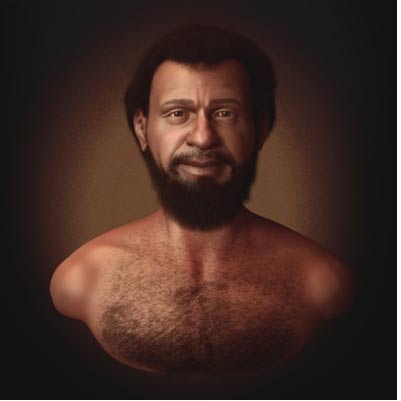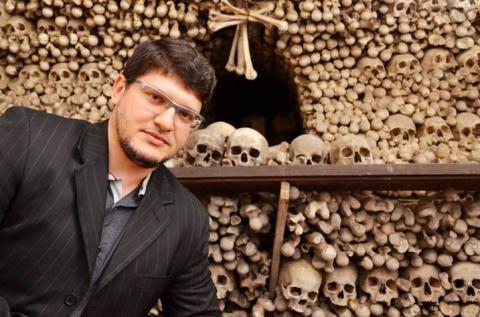When you delve into news related to historic reconstructions, one name consistently emerges: Cícero Moraes. His remarkable talent has brought faces from the distant past back to life, including Mary Magdalene, Saint Anthony of Padua, the Woman of Pumapungo, and even the Renaissance astronomer Nicolaus Copernicus. Among his other notable reconstructions are not one but two Saint Valentines, the Moche Lord of Sipan, the mummified remains of Minirdis the boy mummy, Dante, a Czech vampire, several human ancestors, and the infamous Piltdown Man—a facial reconstruction of the non-existent ape-man from one of history's most famous scientific hoaxes. Moraes was even commissioned by BBC Brazil to create an approximation of what Jesus of Nazareth may have looked like.

With dark skin, hair, and eyes, Moraes’s approximation of Jesus of Nazareth showed what 1st-century Middle Eastern Jews would have looked like, contrasting sharply with traditional depictions of Jesus within art and religion. (Cícero Moraes)
Based in the central Brazilian city of Sinop, Cícero Moraes is a self-taught leader in the cutting-edge field of historical facial reconstruction. With a robust background in 3D computer graphics and a personal mission sparked by a near-death experience, Moraes has dedicated himself to creating facial reconstructions using 3D software and printing technology, emphasizing the use of free software. His impressive portfolio spans all continents (except Antarctica), and he collaborates with forensic dentists, surgeons, anthropologists, veterinarians, and historians. Notably, his reconstructions of saints have gained significant recognition.
Besides developing facial prostheses for humans, Moraes's innovative work even earned him a place in the Guinness Book of World Records in 2021 thanks to having produced—using a corn-based plastic replacement—the first ever 3D-printed tortoise shell. This groundbreaking project was a collaborative effort alongside Sao Paulo-based veterinarians who formed the Animal Avengers, a team dedicated to saving injured animals with 3D-printed prosthetics. This group successfully saved a tortoise that had lost about 85% of its shell and has since gone on to create prosthetic beaks for several birds, including a macaw and a toucan.

Moraes’s collaboration with the Animal Avengers to create the first-ever 3D-printed tortoise shell earned him a place in the Guinness Book of World Records. (Cícero Moraes)
Interview excerpt
Q: How do you determine the hair or eye color during a reconstruction?
A: When we only have the skull with anthropological data, it's very difficult to know details like eye color, hair color, skin tone, and other characteristics. When we don't have DNA data, we create an objective reconstruction that we call a grayscale reconstruction: without color, with closed eyes, and no hair. However, when we work with historical data, we need to create a more human-like reconstruction with details like skin, hair, and eye color, although we explain to people that we don't have objective data for these features. Nevertheless, some studies do have DNA data, and sometimes it's possible to determine things like hair color, eye color, skin tone, and so on.
Q: Do you see yourself as a scientist or an artist?
A: When I started, I would say I was more of an artist, but now I am more of a scientist. These days, my reconstructions are more compatible with living individuals. Creating a reconstruction that perfectly mirrors how a person appeared in life is challenging. It's always an approximation due to each person's unique characteristics.
Want to know more? Read our interview with Cícero Moraes “Unlocking the Past – Insights into the Fascinating World of Forensic Facial Reconstruction” available in the July – August 2024 51st Issue New Technology Uncovering the Past. Get it here!
Featured Image: Image of Cícero Moraes. Source: Cícero Moraes
By Cecilia Bogaard




